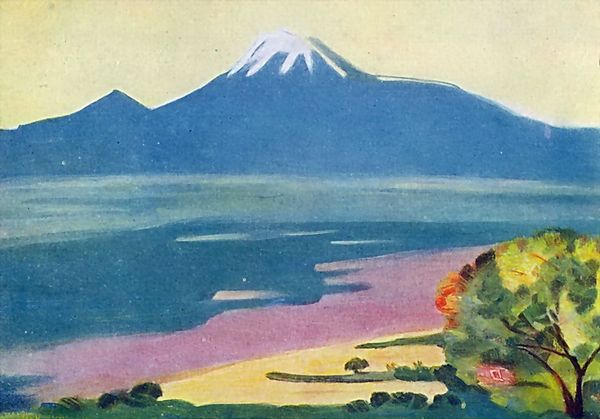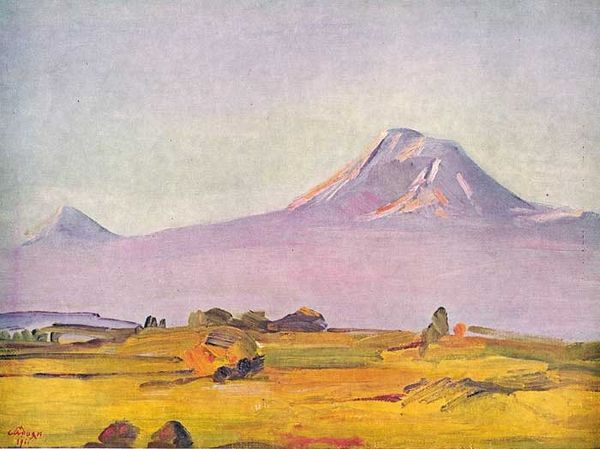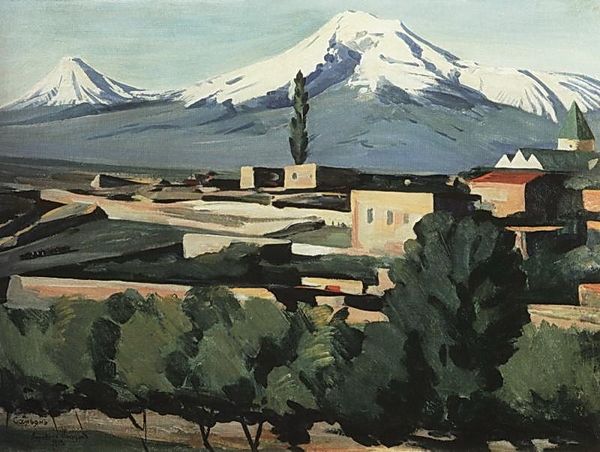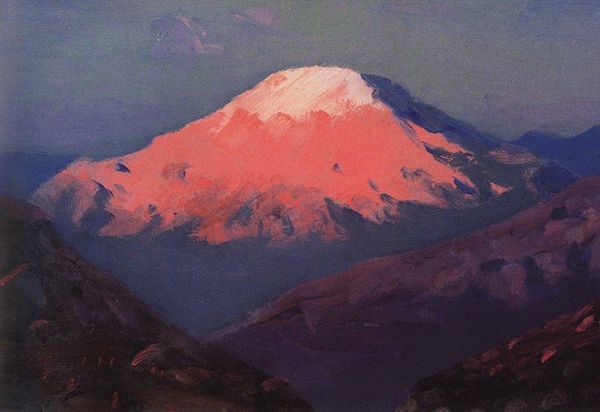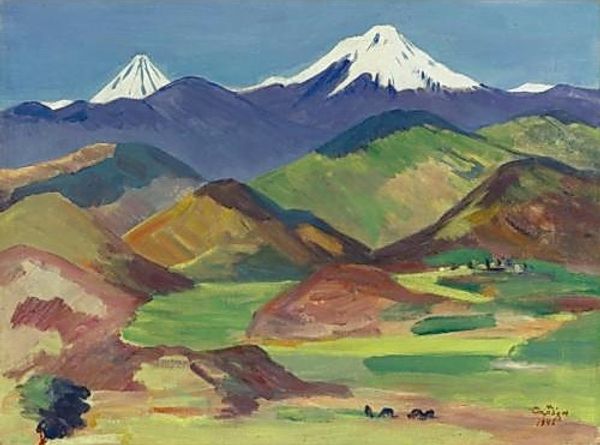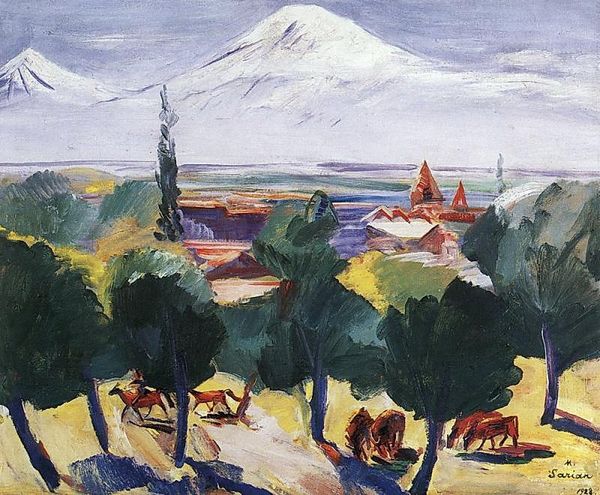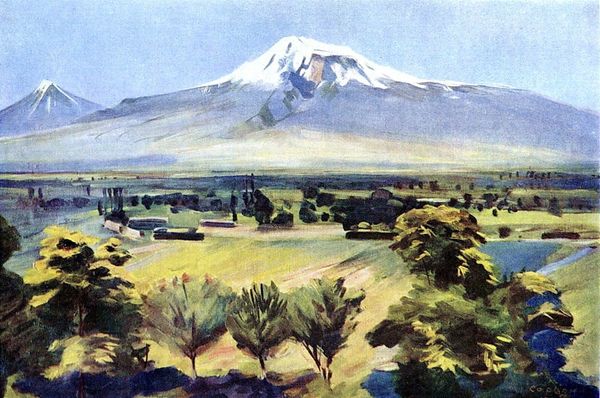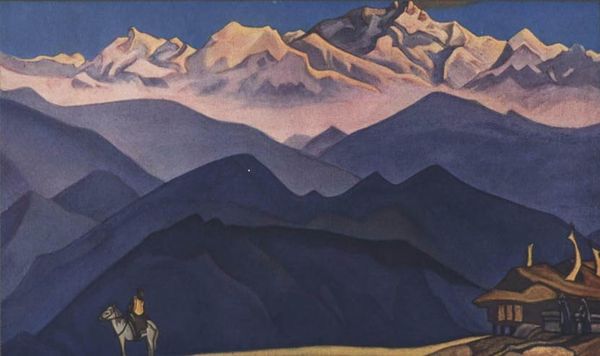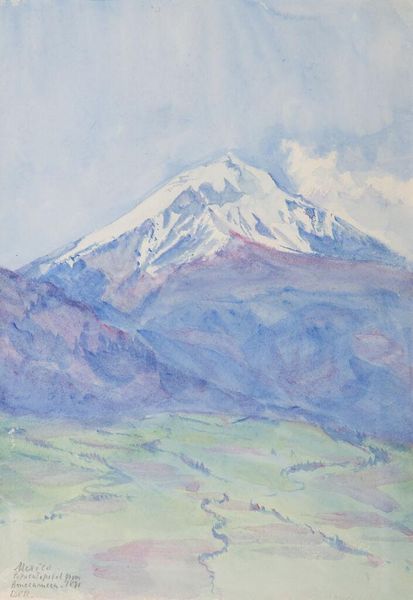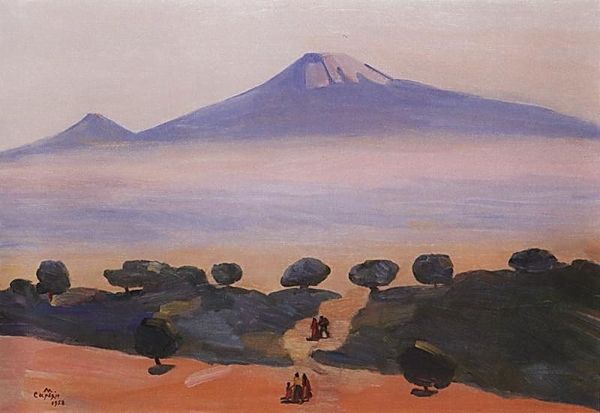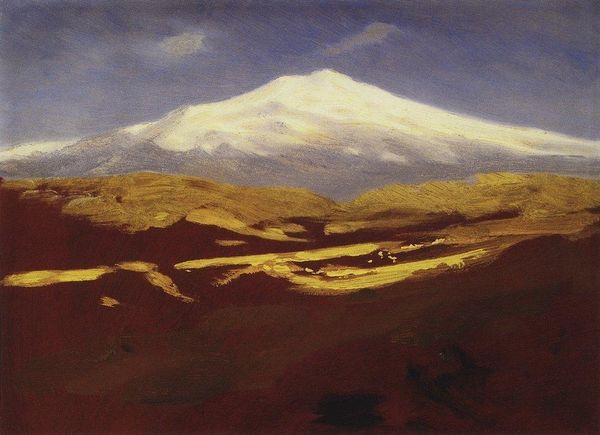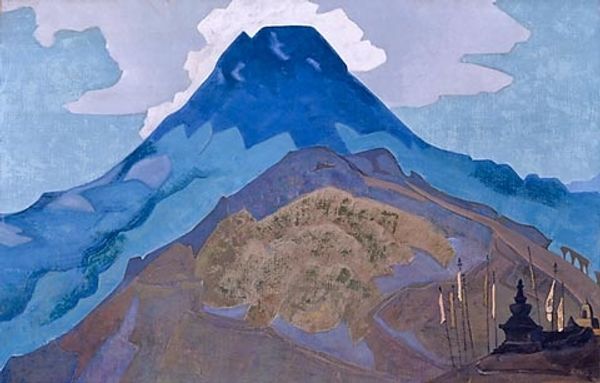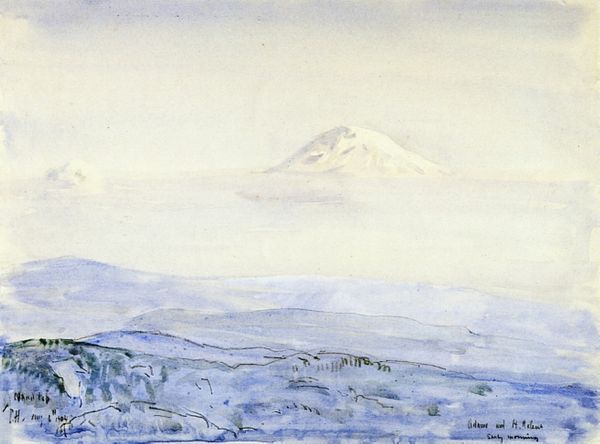
Copyright: Public domain US
Curator: Sarian's "Sunrise over Ararat," painted in 1923, presents a majestic view rendered in oil. My first impression is one of serene, almost mournful grandeur. The muted palette contributes to the weight and scale, even in its seemingly modest size. Editor: There's definitely a contemplative mood. The use of oil-paint in broad strokes suggests speed and intention—but I am compelled to delve deeper into the landscape tradition within a rapidly modernizing Armenia. What sociopolitical landscape shaped Sarian's means of production and reception? Curator: In the context of early Soviet Armenia, landscape painting held potent symbolic value. Sarian, part of an intelligentsia grappling with cultural preservation and societal transformation, used material representations of his homeland—particularly Ararat—as assertions of identity, heritage, and collective memory. The painting process became intrinsically political, affirming cultural sovereignty. Editor: Right. It's hard not to view this "Sunrise over Ararat" divorced from its time. The sky's symbolic weight, heavy above that mountain, mirrors Armenia's struggles through war and genocide, as if Ararat, the spiritual homeland, endures witness. Even that small detail of paint use as indication of speed emphasizes a certain urgency tied into production and Sarian’s position. Curator: Precisely. Sarian distills "place" through layers of social context and cultural expression, connecting oil-paint and canvas to narratives of identity. By elevating the raw beauty of the land, his focus challenges conventional hierarchy between material needs versus cultural representation in times of dramatic political conflict. Editor: The subdued color palette also speaks volumes about a population in mourning and displacement. Its modernist style also points to progress while reminding of lost histories and landscapes. And of course, the painting continues its social work by becoming not only a statement but a safe, emotional residence. Curator: Absolutely. When observing such landscape works, we recognize the profound ways that materials, means, and production contribute toward interpreting Armenia’s complicated past. Editor: These works invite conversation beyond simply aesthetics, revealing historical circumstances embedded inside visual culture, thus forming collective remembrance practices.
Comments
No comments
Be the first to comment and join the conversation on the ultimate creative platform.
